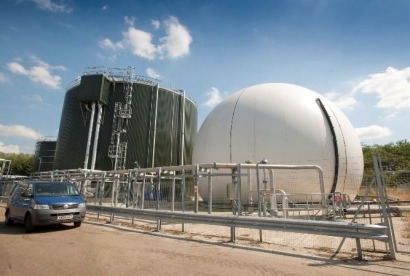
Sixteen plants already operate in Scotland, and a further 24 have planning approval, fuelled by the rise in local authority food waste collections and the mandatory separation of food waste for businesses, which came into effect on January 1, 2014.
The AD process involves farm slurry, vegetable peelings, paper and other organic material rotting inside a closed chamber to produce gas, which is then used to generate electricity.
“Food waste is a source of fuel for anaerobic digesters, and we expect that an increase in the amount of food waste collected by local authorities will now lead to a significant increase in the number of AD plants in Scotland," said Stephanie Clark, Policy Manager at Scottish Renewables.
“The food waste is being diverted from landfill where it would have rotted and produced polluting methane gas. Instead, the waste is broken down by micro-organisms and converted into energy, providing electricity and heat to homes and businesses and reducing carbon emissions,” she added.
Participating Scottish local authorities currently pick up 8,000 tonnes of household food waste every year. That figure could rise to 72,000 tonnes if all 32 councils roll out weekly food waste collection schemes.
Scottish Water has invested heavily in an anaerobic digestion facility in Cumbernauld, Lanarkshire, and set up its own food waste collection service to fuel it.
Finance Director Alan Scott told how the company’s Deerdykes facility can generate up to 8,000 megawatt hours of green electricity each year – enough to power up to 2,000 homes – and is presently the largest single contributor to Scottish Water’s energy self-generation, at around 32 percent.
"As a significant user of electricity Scottish Water is working to reduce energy consumption as well as to increase the amount of energy that we generate ourselves. This can help us keep costs low for the benefit of our customers," Scott said. "Since the launch of our anaerobic digestion facility at Deerdykes near Cumbernauld in 2010 we have recycled approximately 80,000 tonnes of food waste, transforming it into renewable energy and natural fertiliser.
"To support the new Waste (Scotland) Regulations which came into effect on 1 January 2014, we have also invested in a food waste collection service to collect and recycle food waste from a wide variety of businesses including hotels, restaurants, leisure and entertainment facilities, providing a convenient and flexible solution to customer needs” he added.
Western Isles Council’s (Comhairle nan Eilean Siar) anaerobic digester was constructed in 2006 as part of a £12 million waste management project, is located near Stornoway on the Isle of Lewis and processes wastes collected from all households and commercial food waste producers in the Isle of Lewis and the Isle of Harris
Councillor John Mackay, Chair of Transportation and Infrastructure Committee at Comhairle nan Eilean Siar, said the plant processes 3,000 tonnes of organic waste each year, diverting this waste from landfill and producing over 260,000 kWhs of electricity.
“The by-product of the AD process is a high quality growth medium, similar to compost, which is currently used in land restoration projects. The AD plant helps the Comhairle to meet the Scottish Government’s targets,” Mackay said.
Photo caption: Scottish Water's Deerdykes AD plant in Cumbernauld, Lanarkshire (Photo courtesy of Scottish Water)
For additional information:

